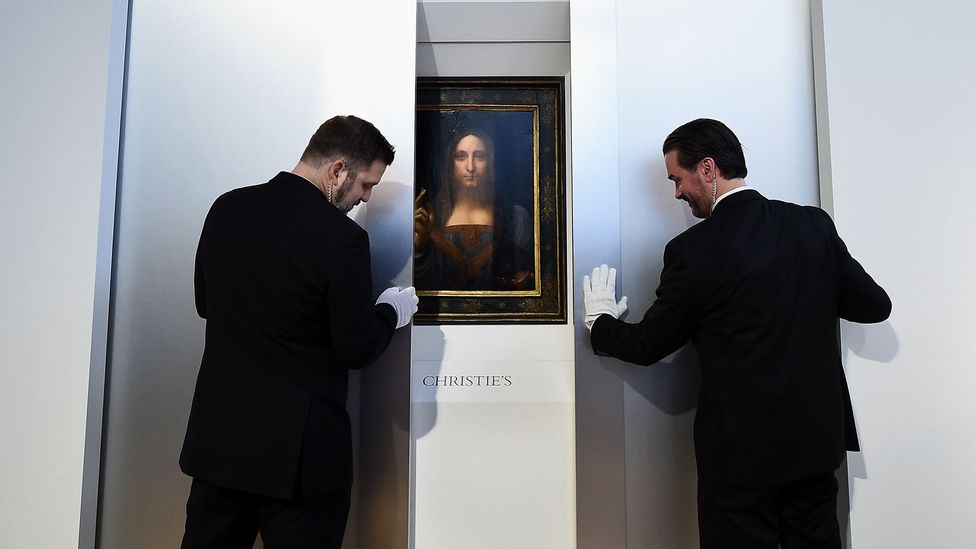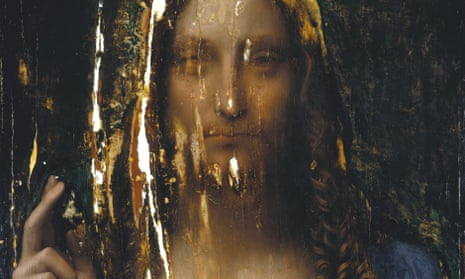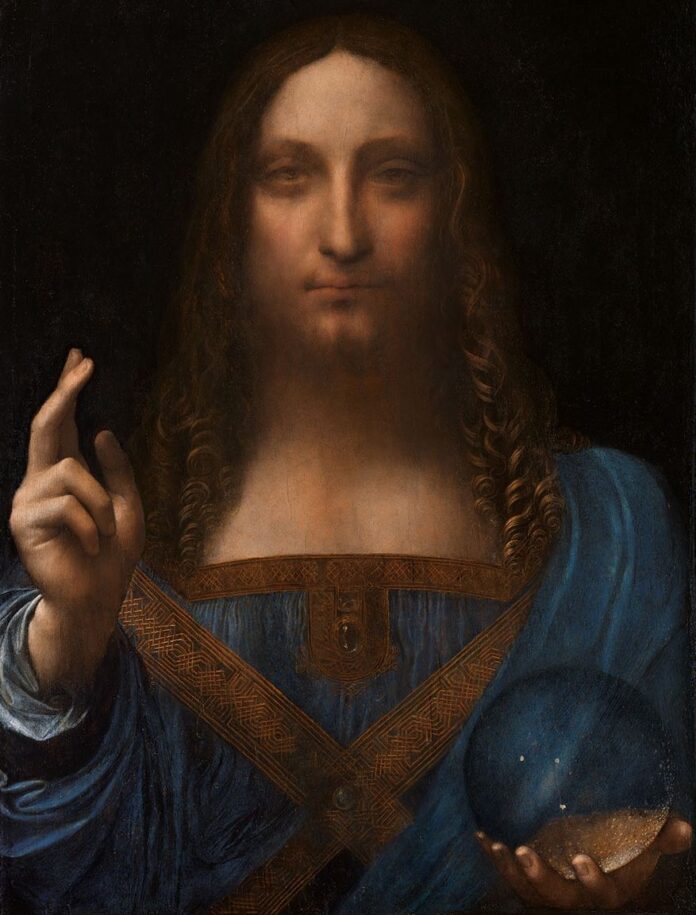When it comes to painting or painters, The Da Vinci is the first name that comes to our minds. His many famous paintings include Mona Lisa and The Last Supper. One of them is also called Salvator Mundi. Here in this blog, we will unveil the reason behind the exhibition cancellation of this long-lost painting. Then, of course, we heard cries of the painting being fake, but is there anything more controversy surrounding the world’s most expensive painting?
History of Painting
Salvator Mundi is one of the attributed works by Leonardo da Vinci from the 1500s. It became one of the most expensive works of art ever sold. Moreover, it became one of the most controversial paintings of the 21st Century because of its heavy restoration.
The painting depicts Christ as the ‘Savior of the World.’ He is wearing a Renaissance dress with two fingers extending while giving the benediction. In his left hand, he is holding a crystal orb, representing the crystalline sphere of the heavens. The painting depicts Jesus’ alluding role as the master of the cosmos.
Journey of the Painting
Salvator Mundi is a painting by the artist Leonardo Da Vinci during the Italian Renaissance, dated to c. 1500. The words spread around the painting are about losing it during the restoration process. Unfortunately, the restoration the painting is quite overdone. Everybody thought it to be a copy, as the original was lost somewhere. In the National Gallery, London, there was a display of Leonardo’s rediscovered and restored works in 2011-12. Later, after six years, the painting was sold in an auction at Christie’s at a prohibitive price.

Leonardo da Vinci’s Salvator Mundi was sold by Christie’s in 2017 for a record-breaking $450 million (Credit: Photo by Ilya S Savenok/Getty Images for Christie’s Auction House)
In 2017, Louvre Abu Dhabi bought the painting at an auction by Christie’s for an excruciating price of $450.3 million. It also set a new record for the most expensive painting ever sold.
Reason Behind Exhibition Cancellation?
There was a sudden cancellation of the exhibition and people were not aware about the reason behind it. Even though the reason behind the cancellation was unknown, people speculated it to be the painting itself. However, there was no clear reason behind the sudden and mysterious postponement of the painting, an official statement stated, “Further details will be announced soon.”
Many people criticized about the buying and selling of a for such a heft price. The talks about Louvre Abu Dhabi having doubts about Salvator Mundi doing rounds, there’s a high probability that the officials would be aware of the painting’s condition. Yet, despite all this, they bought the painting.
Former director of New York’s Metropolitan Museum, Thomas Campbell, wrote: “450 million dollars? Hope the buyer understands the issues relating to conservation.” Pictures of accompanying Salvator Mundi for restoration are available. There was a cleaning of all the previous repaints to reveal the real image, which was full of streaky gaps, including a sizeable few running from bottom to top. The implication of the Christie’s selling the painting was the over-restoration.
Glimpse of the Original

‘Why not leave the painting in its raw yet beautiful state?’ … a detail of Salvator Mundi after touch-ups had been removed.
Photograph: Courtesy Dianne Modestini / © 2011 Salvator Mundi LLC
The photograph was, in fact, something of a bombshell. After the removal of over-restoration, the real painting displayed an overwhelming site. The time had left Christ with impaired eyes and partly bald, yet the face still looked beautiful. One could see the harmonious and smooth face with anatomically precise. The painting has a completely different feeling and tone from the ambiguous and smoky appearance of the painting we see today. If the scars of the age are visible, so is the youthful beauty of Christ. He looks like just the kind of long-haired, androgynous model Leonardo loved to portray. The painting was as powerful as it was without any further treatment, and people believed in leaving it in its original form. Another element revealed during restoration was that Christ had two right thumbs, which art historians call a ‘pentimento.’ This term certainly means that the artist had second thoughts while painting making everyone believe that Salvator Mundi, which they have, is the original and not the copied version. So this piece of crucial evidence was enough to identify that the painting is itself one of the masterpeices by Leonardo and suggests that its restoration is quite excessive.
Summing up
It was an institutional embarrassment about the decision to work with a group of art dealers to authenticate a painting of Leonardo which also explains the lack of experts at the National Gallery. The painting is a masterpiece of Leonardo himself and a part of history.

